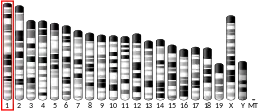| FCRLA | |||||||||||||||||||||||||||||||||||||||||||||||||||
|---|---|---|---|---|---|---|---|---|---|---|---|---|---|---|---|---|---|---|---|---|---|---|---|---|---|---|---|---|---|---|---|---|---|---|---|---|---|---|---|---|---|---|---|---|---|---|---|---|---|---|---|
| |||||||||||||||||||||||||||||||||||||||||||||||||||
| Identifiers | |||||||||||||||||||||||||||||||||||||||||||||||||||
| Aliases | FCRLA, FCRL, FCRL1, FCRLM1, FCRLX, FCRLb, FCRLc1, FCRLc2, FCRLd, FCRLe, FCRX, FREB, Fc receptor like A | ||||||||||||||||||||||||||||||||||||||||||||||||||
| External IDs | OMIM: 606891 MGI: 2138647 HomoloGene: 13106 GeneCards: FCRLA | ||||||||||||||||||||||||||||||||||||||||||||||||||
| |||||||||||||||||||||||||||||||||||||||||||||||||||
| |||||||||||||||||||||||||||||||||||||||||||||||||||
| |||||||||||||||||||||||||||||||||||||||||||||||||||
| |||||||||||||||||||||||||||||||||||||||||||||||||||
| Wikidata | |||||||||||||||||||||||||||||||||||||||||||||||||||
| |||||||||||||||||||||||||||||||||||||||||||||||||||
Fc receptor-like A is a protein that in humans is encoded by the FCRLA gene.[5][6]
Receptors for the Fc fragment of IgG, or FCGRs (see MIM 146790), are cell surface glycoproteins of the Ig superfamily (IgSF). These receptors mediate phagocytosis of IgG-coated pathogens and promote activation of effector cells, leading to inflammatory responses and antibody-mediated cellular cytotoxicity. All FCGR genes map to human chromosome 1. Additional genes in this region, including FREB, encode FCGR homologs that are selectively expressed in B cells and may be implicated in B-cell development and lymphomagenesis.[supplied by OMIM][6]
References
- 1 2 3 GRCh38: Ensembl release 89: ENSG00000132185 - Ensembl, May 2017
- 1 2 3 GRCm38: Ensembl release 89: ENSMUSG00000038421 - Ensembl, May 2017
- ↑ "Human PubMed Reference:". National Center for Biotechnology Information, U.S. National Library of Medicine.
- ↑ "Mouse PubMed Reference:". National Center for Biotechnology Information, U.S. National Library of Medicine.
- ↑ Mechetina LV, Najakshin AM, Volkova OY, Guselnikov SV, Faizulin RZ, Alabyev BY, Chikaev NA, Vinogradova MS, Taranin AV (Dec 2001). "FCRL, a novel member of the leukocyte Fc receptor family possesses unique structural features". Eur J Immunol. 32 (1): 87–96. doi:10.1002/1521-4141(200201)32:1<87::AID-IMMU87>3.0.CO;2-#. PMID 11754007. S2CID 196599868.
- 1 2 "Entrez Gene: FCRLA Fc receptor-like A".
Further reading
- Facchetti F, Cella M, Festa S, et al. (2002). "An unusual Fc receptor-related protein expressed in human centroblasts". Proc. Natl. Acad. Sci. U.S.A. 99 (6): 3776–81. Bibcode:2002PNAS...99.3776F. doi:10.1073/pnas.022042699. PMC 122600. PMID 11891275.
- Davis RS, Li H, Chen CC, et al. (2003). "Definition of an Fc receptor-related gene (FcRX) expressed in human and mouse B cells". Int. Immunol. 14 (9): 1075–83. doi:10.1093/intimm/dxf074. PMID 12202404.
- Strausberg RL, Feingold EA, Grouse LH, et al. (2003). "Generation and initial analysis of more than 15,000 full-length human and mouse cDNA sequences". Proc. Natl. Acad. Sci. U.S.A. 99 (26): 16899–903. Bibcode:2002PNAS...9916899M. doi:10.1073/pnas.242603899. PMC 139241. PMID 12477932.
- Huizinga TW, Ioan-Facsinay A (2004). "Soluble FcgammaRIIIa as a marker for rheumatoid arthritis: the use of genetics in selected populations to study pathogenetic pathways". J. Rheumatol. 30 (9): 1904–6. PMID 12966588.
- Clark HF, Gurney AL, Abaya E, et al. (2003). "The Secreted Protein Discovery Initiative (SPDI), a Large-Scale Effort to Identify Novel Human Secreted and Transmembrane Proteins: A Bioinformatics Assessment". Genome Res. 13 (10): 2265–70. doi:10.1101/gr.1293003. PMC 403697. PMID 12975309.
- Zhang Z, Henzel WJ (2005). "Signal peptide prediction based on analysis of experimentally verified cleavage sites". Protein Sci. 13 (10): 2819–24. doi:10.1110/ps.04682504. PMC 2286551. PMID 15340161.
- Gerhard DS, Wagner L, Feingold EA, et al. (2004). "The Status, Quality, and Expansion of the NIH Full-Length cDNA Project: The Mammalian Gene Collection (MGC)". Genome Res. 14 (10B): 2121–7. doi:10.1101/gr.2596504. PMC 528928. PMID 15489334.
- Inozume T, Matsuzaki Y, Kurihara S, et al. (2005). "Novel melanoma antigen, FCRL/FREB, identified by cDNA profile comparison using DNA chip are immunogenic in multiple melanoma patients". Int. J. Cancer. 114 (2): 283–90. doi:10.1002/ijc.20735. PMID 15551350.
- Gregory SG, Barlow KF, McLay KE, et al. (2006). "The DNA sequence and biological annotation of human chromosome 1". Nature. 441 (7091): 315–21. Bibcode:2006Natur.441..315G. doi:10.1038/nature04727. PMID 16710414.
- Taylor AI, Gould HJ, Sutton BJ, Calvert RA (2007). "The first avian Ig-like Fc receptor family member combines features of mammalian FcR and FCRL". Immunogenetics. 59 (4): 323–8. doi:10.1007/s00251-007-0195-9. PMID 17273841. S2CID 1971426.
This article is issued from Wikipedia. The text is licensed under Creative Commons - Attribution - Sharealike. Additional terms may apply for the media files.



